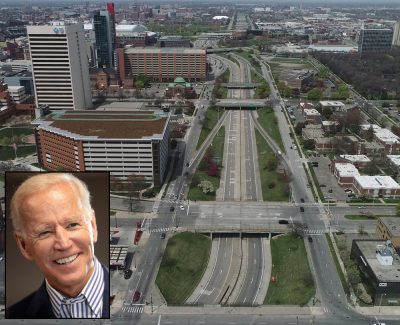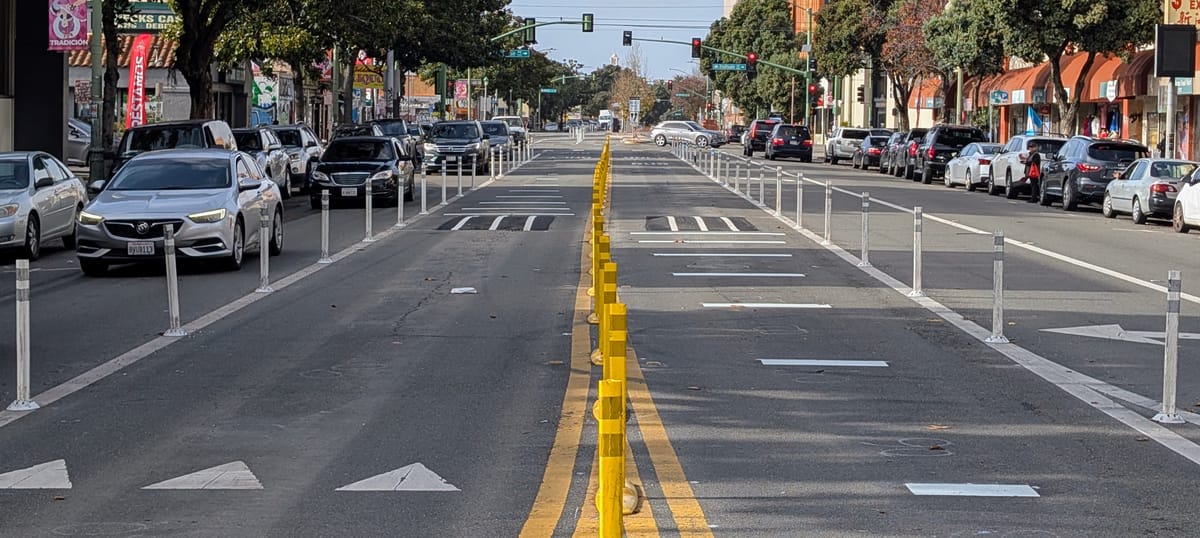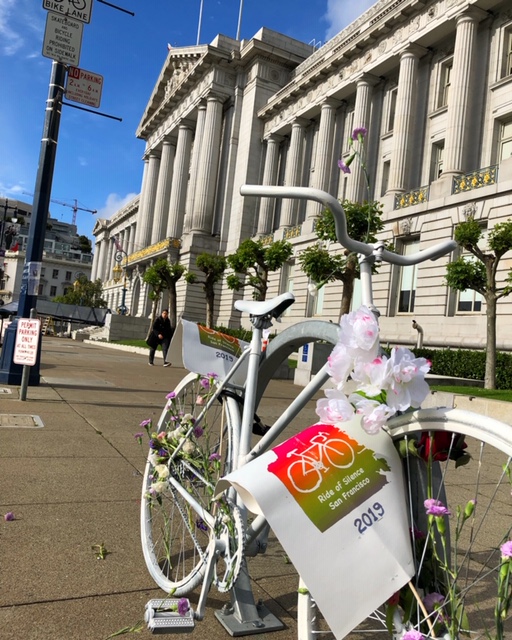Federal highway grants that typically lavish billions of dollars to build or widen freeways will now be spent to dismantle a Detroit expressway that has separated communities for generations.
In an example of the new approach at the Biden administration, the U.S. Department of Transportation officials this month gave Michigan $105 million to kickstart the removal of Interstate 375, a mile-long sunken freeway that decimated two Black neighborhoods when it was built six decades ago.
“This stretch of I-375 cuts like a gash through the neighborhood, one of many examples I have seen in communities across the country where a piece of infrastructure has become a barrier,” Transportation Secretary Pete Buttigieg told the Associated Press. “With these funds, we’re now partnering with the state and the community to transform it into a road that will connect rather than divide.”
The award will allow the state to begin tearing down the reviled roadway in 2025, two years earlier than initially planned, and replace it with a street-level boulevard by 2028. Michigan Gov. Gretchen Whitmer originally requested $180 million for the project, which is estimated to cost $300 million, but the federal grant is plenty to get started on construction.
Advocates said they have been waiting a long time for the project to move forward.
“We’ve been talking about this whole idea of the mistakes of urban highways and the impact it had,” said Megan Owens, executive director of Transportation Riders United. “We’re excited that this jumped forward and was recognized as something that really needs to be done.”
Federal transportation spending didn't always work this way. For decades, the U.S. DOT funneled billions in highway funding to states, which had carte blanche to use the money however they saw fit. Those funds went toward not only repairing roads and bridges, but widening multi-lane thoroughfares, to the dismay of communities that had been carved up by them in the name of urban renewal.
But a change occurred once President Biden was sworn in and negotiations over his signature infrastructure package began. Advocates demanded billions in funding toward proposals that would correct the concrete mistakes of the past. One program, the Reconnecting Communities Initiative, was initially cut from $20 billion to $1 billion during negotiations last summer, and that funding was spread across several pots that states and municipalities could tap.
Once Congress passed the $1.2-trillion infrastructure act in November 2021, federal transportation administration officials began pressuring states to prioritize climate-friendly projects and make repairs before building new asphalt arteries.
One of the most popular programs has been the Infrastructure For Rebuilding America program, a competitive highway and rail grant designed to award $8 billion over the next five years to make transportation systems “safer and more resilient.” This fall, U.S. DOT officials gave out the first tranche of $1.5 billion to 26 projects, including the removal of I-375.
“This is not necessarily highway teardown but it is designed to reconnect commutes divided by infrastructure,” said Steve Davis, assistant vice president of strategy at Smart Growth America.“This was an infrastructure grant, but it’s clear the administration is taking this idea seriously.”
Now that the funding has been approved, community leaders want a say in the plan before the state proceeds any further. Transportation advocates want to ensure that stoplights, pedestrian crossings, and protected bike lanes are added to the boulevard that eventually replaces the highway. Some question how wide the new road needs to be, with one iteration showing six and four lanes and another as many as 10.
“Detroit has a moat of highways surrounding it with massive interstates that really blocked off growth, or at least vibrant dense development in downtown,” Owens said.
The most contentious part of the proposal involves what to do with excess property created by the highway’s removal. Renard Monczunski, a transit justice organizer with Detroit People's Platform, wants those tracts dedicated toward affordable housing for residents in a 30-block area displaced by the highway’s construction in the 1960s.
“Deconstructing the highways is the first step but what are the next steps for redressing racial harms?” Monczunski said. “The fear behind this is there is going to be another opportunity for wealthy white billionaires to gentrify those parcels of land, create luxury apartments that do not fit the needs of majority black Detroit.”
The grant is a good start toward equitable land use and climate resiliency, but still a drop in the bucket compared to the funding spigot the federal government has for new highways. A few miles away from the I-375 deconstruction, Whitmer is leading a $3-billion widening and rebuilding project of two interstates, 95 and 74, that wrap the Motor City. Activists had fought to delay the plan, which is proceeding despite Detroit losing 1.2 million people since 1950.
“If you’re going to spend the money to repair these things it makes very little sense to plow money into literally creating the same problem,” Davis said. “That’s a real risk with this funding. The administration needs to use as many programs as possible to steer the ship in this direction, but ultimately it will be up to the state”





